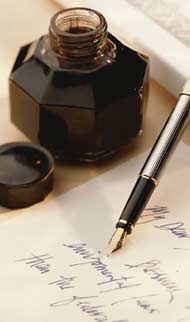 If you use black-blue ink to write a diary, you will notice that the writing from today appears in blue, while yesterday’s writing has turned black. This phenomenon is the result of a chemical change.
If you use black-blue ink to write a diary, you will notice that the writing from today appears in blue, while yesterday’s writing has turned black. This phenomenon is the result of a chemical change.
The main component of black-blue ink is phthalocyanine. It is a compound that is neither purely blue nor purely black, but has a light green color. Naturally, this type of ink is not very clear when written, which is why organic dyes are added to enhance the blue appearance.
Therefore, when you first start using black-blue ink, it initially appears blue, which is the ink’s original color. However, over time, the phthalocyanine in the ink will undergo a chemical reaction with the oxygen in the air, transforming into iron phthalocyanine. This compound precipitates as a black substance, causing the previously blue writing to change to black.
Some people, after finishing writing with the ink, often forget to close the ink bottle, which leads to two undesirable outcomes. First, the water will evaporate quickly, causing the ink level to decrease. Second, the phthalocyanine in the ink will react with atmospheric oxygen to become iron phthalocyanine, which precipitates. As a result, when dipping the pen nib into the ink, the precipitate will clog the nib, making it impossible to write.

















































